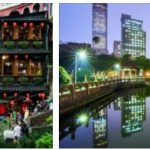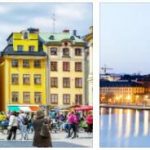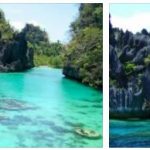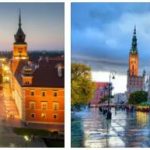Cities.
The first point where you get when you arrive in Chile is the capital of the country Santiago . The city was founded by the Spanish conquistadors in 1541. This is a very clean city with old houses and modern skyscrapers that stand against the backdrop of the majestic snow-capped Andes. Santiago is stretched out stretched in length.
The center of the city is the Square of Arms, on which stands a monument to the founder of the city – Pedro de Valdivia. The square is surrounded by such structures as the House of Governors; Municipality; the building of the Royal Audience, which now houses the Historical Museum; the Cathedral, which was built in the 18th century; Paseo Aumada alley; the palace complex of La Moneda with the Presidential Palace and the Central Market.
Close to Santiago there is a mountain of San Cristobal with a statue of the Virgin Mary, made of white stone, this mountain offers a beautiful view of the city and the mountains surrounding it.
According to Top-mba-universities, Chile.Santiago is distinguished by its many parks and gardens – the city has the Botanical Garden, the Central City Park and the Quinto Normal, Balmaceda, Santa Lucia and Metropolitano parks. The Barrio Bellavista area or, as it is also called, the “Paris Quarter” is very beautiful, where, among quiet alleys, there are luxurious villas.
As in any other capital, the city has museums. It is worth visiting the Museum of Chilean Pre-Columbian Art, the Museum of Modern Art, the National Historical Museum, the oldest museum in Latin America – the National Museum of Fine Arts, the Museum of Santiago, as well as the house-museum of the great Chilean poet Pablo Neruda.
Not far from Santiago is the country’s largest port – the city of Valparaiso . In the center of the city there is Satamayor Square, where there are monuments to the participants of the Pacific War, the main attractions of the city are the Cathedral, the fountain on Victoria Square, the Parliament building, the Natural History Museum, the Museum of Art and the Maritime Museum, the city port is interesting, and there is a market on Muelle Prat Pier.
Atacama Desert.
In the north of Chile stretches the lifeless, rocky Atacama Desert, which blooms on rare days with rain, but for most of its territory there is no precipitation for years. More than 160 species of cacti grow here and about 200 species of animals live. Atacama must be visited to see the extraordinary beauty of the oases; hot springs Mamin; salt lakes, on the banks of which flamingos live; El Tatio valley with geysers, which is located at an altitude of more than 4000 m and where you can swim in a natural hot pool.
There are also cities in Atacama – the ancient San Pedro de Atacama, where the 12th century fortress Pucara de Quitor is located; the city of Tokona; the port city of Antofagasta and Copiapo, home to the University of Atacama.
In the south of the country is the city of Port Mont . It is an important transport hub in southern Chile. It is from here that excursions to the lake district of Los Lagos depart – an area where, due to tectonic processes, many lakes have formed. Port Mont was founded by the Germans, so the architecture here is different from the characteristic colonial architecture of other cities. Residential buildings are strict in European style, with tiled roofs topped with weathercocks. Tourists will be interested in the Cathedral, which was built in 1856. From Port Mont you can go to the thermal springs, which are located between the coastal fjords and mountain ranges. This is an area of volcanic activity, so hot waters come close to the surface of the earth. You can get here only by boats departing from Port Mont.
VOLCANOES
Chile is an area where two plates collided, resulting in the formation of the Andes Mountains. This is a seismically dangerous area, where not only earthquakes, but also volcanic eruptions occur. There are about 600 volcanoes in total. In Chile, there is the world’s highest active volcano Hualyatiri (6064 m)
. It is located in the Lauka National Park. Since 1825, the volcano has erupted 4 times, and the last eruption occurred in 1985. The highest point in the country is also a volcano – Ojos del Salado (6893 m), this is the second highest peak in the Western Hemisphere. It is worth visiting the Maipo, Lullaillaco and Tupungato volcanoes. Excursions are organized to volcanoes that do not pose a danger to tourists, they are conducted by experienced volcanologist guides working in the National Parks.
LAKES
In the south of the country is the lake district of Los Lagos. The lakes formed here arose as a result of tectonic processes. This area is often compared with Karelia or Finland. The lakes are teeming with fish, but the water is cool for swimming – +16..+18 degrees. Most often they rest on the lakes of Llanquihue and Villarica.
Villarica is located on the slope of the volcano of the same name. Mostly wealthy people rest in the fashionable resort of Pucon, because the infrastructure is developed here, like in the best European resorts, and in winter you can go skiing. They enter the Los Lagos region through the city of Puerto Montt.









